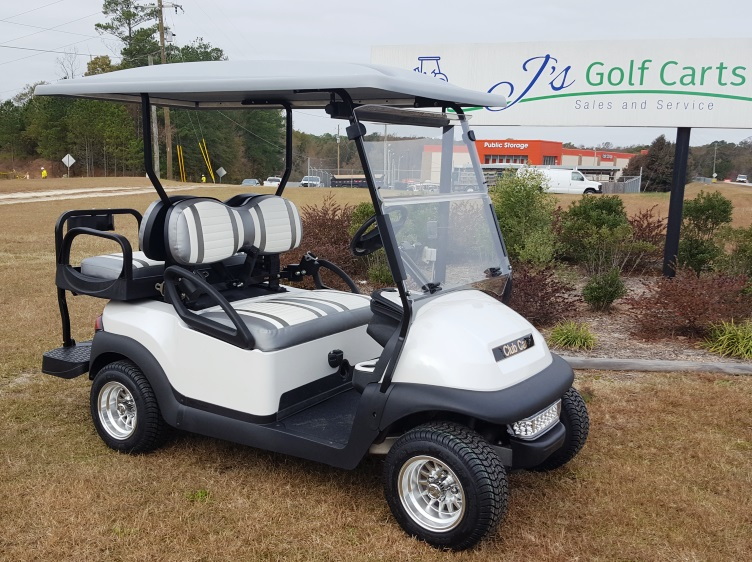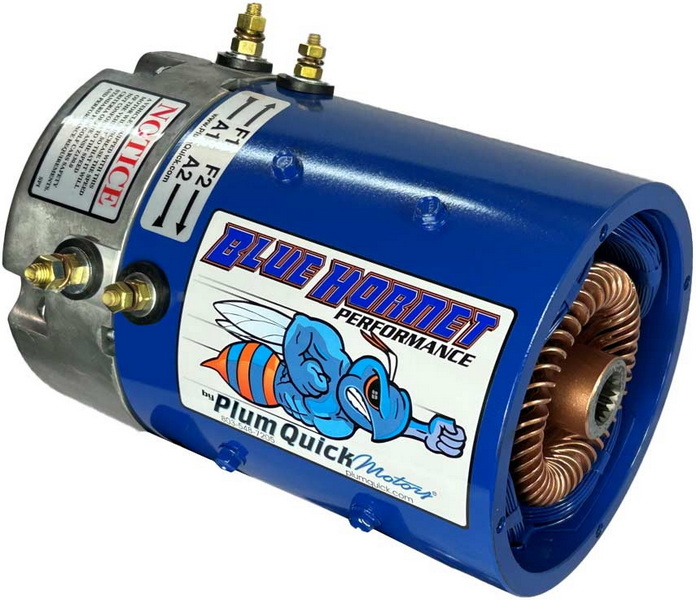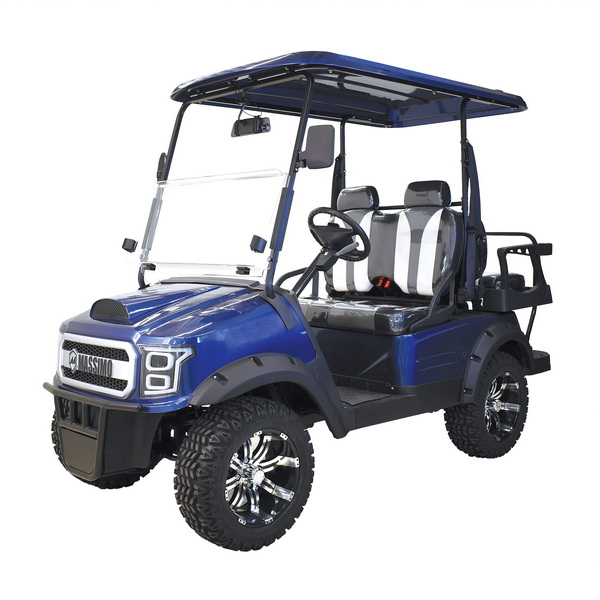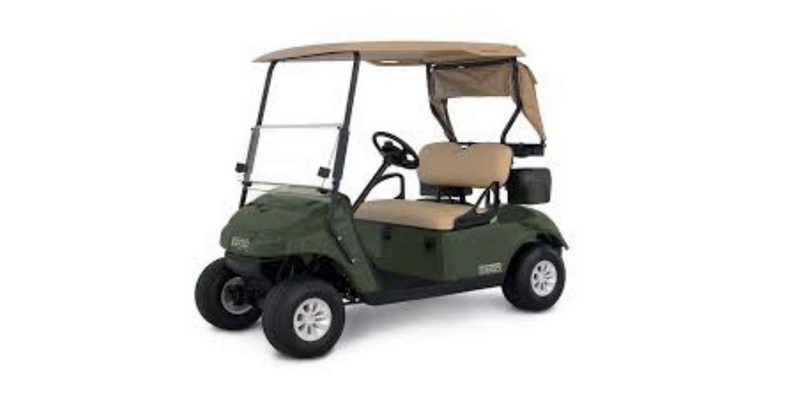Content Menu
● Understanding Golf Cart Electric Motors
● Typical Weight Range of Electric Golf Cart Motors
● Factors Influencing Electric Motor Weight
● Comparing Electric and Gas-Powered Golf Cart Motors
● Impact of Motor Weight on Golf Cart Performance
● Choosing the Right Electric Motor for Your Golf Cart
● Maintenance Tips for Electric Golf Cart Motors
● Future Trends in Golf Cart Electric Motors
● Conclusion
● FAQ
>> 1. What is the average weight of an electric golf cart?
>> 2. How does battery type affect the overall weight of a golf cart?
>> 3. Can I upgrade my golf cart's motor for better performance?
>> 4. What maintenance do electric golf cart motors require?
>> 5. How does motor weight influence battery life?
Electric golf carts have become increasingly popular due to their eco-friendliness and efficiency. One of the essential components that determine their performance is the electric motor. Understanding how much a golf cart electric motor weighs can provide insights into the overall weight of the cart, its performance capabilities, and how it affects maneuverability. In this article, we will explore various aspects related to the weight of electric motors in golf carts, including factors influencing their weight, comparisons with gas-powered motors, and their impact on the cart's performance.

Understanding Golf Cart Electric Motors
Electric motors in golf carts are designed to convert electrical energy from batteries into mechanical energy to propel the cart. The weight of these motors can vary significantly based on several factors:
- Type of Motor: Different types of electric motors (DC vs. AC) have varying weights. DC motors are generally lighter than AC motors due to their simpler construction.
- Power Rating: The horsepower (HP) rating of the motor directly influences its weight. Higher HP motors typically weigh more because they require additional materials for construction.
- Materials Used: The materials used in manufacturing the motor also play a crucial role. Motors made from heavier materials like steel will weigh more than those made from lighter materials like aluminum.
Typical Weight Range of Electric Golf Cart Motors
On average, electric golf cart motors weigh between 50 to 100 pounds (approximately 23 to 45 kg). Here's a breakdown of different types of electric motors and their approximate weights:
| Motor Type | Weight Range (lbs) | Weight Range (kg) |
| Standard DC Motor | 50 - 70 lbs | 23 - 32 kg |
| High Torque DC Motor | 70 - 100 lbs | 32 - 45 kg |
| AC Motor | 80 - 120 lbs | 36 - 54 kg |
The weight of the motor is just one component contributing to the overall weight of an electric golf cart, which typically ranges from 900 to 1,100 pounds (approximately 408 to 499 kg) when fully equipped with batteries and accessories.
Factors Influencing Electric Motor Weight
Several factors contribute to the weight of an electric golf cart motor:
1. Battery Size and Type: The type and size of batteries used in conjunction with the motor affect overall weight. Lead-acid batteries are heavier compared to lithium-ion batteries, which can reduce total cart weight when used.
2. Motor Design: The design complexity and intended use of the motor can influence its weight. Motors designed for high performance or specialized tasks may be heavier due to additional components.
3. Cooling Mechanisms: Some high-performance electric motors include cooling systems that add extra weight but enhance efficiency and lifespan.
4. Controller Compatibility: The type of controller paired with the motor can also influence its design and weight. More sophisticated controllers may require more robust motors.
5. Manufacturing Techniques: Advances in manufacturing techniques can lead to lighter components without sacrificing strength or durability. For instance, using techniques like die-casting or precision machining can produce lighter parts that still meet performance requirements.

Comparing Electric and Gas-Powered Golf Cart Motors
When comparing electric golf cart motors to gas-powered ones, there are notable differences in weight and performance:
| Aspect | Electric Motors | Gas-Powered Motors |
| Average Weight | 50 - 100 lbs | 80 - 200 lbs |
| Power Output | Typically up to 15 HP | Typically up to 20 HP |
| Efficiency | Higher efficiency; lower operating costs | Lower efficiency; higher fuel costs |
| Maintenance | Lower maintenance requirements | Higher maintenance due to engine parts |
Electric motors tend to be lighter than gas engines, contributing to better maneuverability and potentially longer battery life due to reduced energy consumption.
Impact of Motor Weight on Golf Cart Performance
The weight of the electric motor has significant implications for golf cart performance:
- Acceleration and Speed: A lighter motor allows for quicker acceleration and potentially higher speeds, especially on flat terrain.
- Maneuverability: Lighter carts are easier to handle, making them ideal for navigating tight spaces on a golf course or in residential areas.
- Battery Efficiency: A lighter overall weight means that less power is required from the batteries for movement, enhancing battery life and range.
- Load Capacity: The combined weight of the motor and other components affects how much additional load (passengers or cargo) a golf cart can carry without compromising performance.
Choosing the Right Electric Motor for Your Golf Cart
When selecting an electric motor for your golf cart, consider the following factors:
1. Intended Use: Determine whether you will primarily use your cart on flat terrain or if you need it for hilly areas. Higher torque motors are better suited for inclines but may weigh more.
2. Performance Needs: If speed is a priority, look for higher horsepower ratings, but be aware that these motors may add extra weight.
3. Battery Compatibility: Ensure that your chosen motor is compatible with your battery type and size for optimal performance.
4. Budget Considerations: Weigh the cost against performance benefits. Sometimes investing in a slightly heavier but more powerful motor can yield better long-term results.
5. Brand Reputation: Research manufacturers known for producing reliable electric motors with good customer support and warranty options.

Maintenance Tips for Electric Golf Cart Motors
Proper maintenance can extend the lifespan of your electric golf cart's motor:
- Regular Inspections: Check connections, wiring, and mounting hardware for signs of wear or corrosion regularly.
- Cleaning: Keep the motor clean from dirt and debris that could affect performance. Use compressed air or a soft brush for cleaning.
- Lubrication: Ensure that any moving parts are adequately lubricated as per manufacturer recommendations to prevent wear.
- Temperature Monitoring: If your motor has a cooling system, monitor its effectiveness during use to prevent overheating issues.
Future Trends in Golf Cart Electric Motors
As technology advances, we can expect several trends in electric golf cart motors:
- Increased Efficiency: New designs will focus on maximizing efficiency while minimizing weight through advanced materials like carbon fiber composites.
- Smart Technology Integration: Future models may incorporate smart technology that allows users to monitor performance metrics via mobile apps.
- Sustainable Materials: Manufacturers are likely to explore sustainable materials that reduce environmental impact while maintaining performance standards.
- Higher Power Outputs with Lower Weights: Innovations in engineering could lead to more powerful motors that remain lightweight, enhancing overall performance without compromising maneuverability.
Conclusion
In summary, understanding how much a golf cart electric motor weighs is crucial for assessing its impact on overall cart performance. With weights typically ranging from 50 to 100 pounds, these motors play a vital role in determining speed, acceleration, and maneuverability. Factors such as battery type, motor design, material choice, and intended use significantly influence this weight.
As electric golf carts continue to gain popularity due to their environmental benefits and operational efficiency, knowledge about their components—including electric motors—will help users make informed decisions regarding their purchase and maintenance.
Investing time in understanding these aspects not only enhances your golfing experience but also ensures you choose a model that meets your specific needs while providing excellent value over time.

FAQ
1. What is the average weight of an electric golf cart?
The average electric golf cart weighs between 900 and 1,100 pounds, depending on its configuration and components.
2. How does battery type affect the overall weight of a golf cart?
Lead-acid batteries are heavier than lithium-ion batteries; thus, using lithium-ion can significantly reduce the overall weight of the cart.
3. Can I upgrade my golf cart's motor for better performance?
Yes, upgrading to a high-torque or higher horsepower motor can improve acceleration and speed but may also increase overall weight.
4. What maintenance do electric golf cart motors require?
Electric motors generally require less maintenance than gas-powered ones but should be checked periodically for wear and proper functioning.
5. How does motor weight influence battery life?
Lighter motors contribute to lower power consumption during operation, which can enhance battery life by reducing strain on the battery pack during use.











































